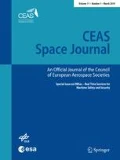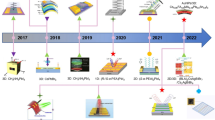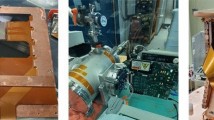Abstract
Since 2003 the European Space Agency’s roadmap for star tracker CMOS APS (active pixel) image sensors has included developments to integrate significant logic functionality with the pixel array, aiming at an imaging system-on-chip. FaintStar (FS) will be the first commercially available product resulting from these activities. FaintStar is being developed by ams Sensors Belgium (formerly CMOSIS) in two phases. Phase 1 served to specify, design, manufacture, and characterise a prototype chip, informally named FaintStar1 (FS1), the subject of this paper. FaintStar is a one megapixel image sensor with 10 µm pixels and rolling shutter. All interactions with the user are over a single 80 Mb/s SpaceWire link. FaintStar offers various readout modes (full frame, windowed, windowed with dual rolling shutter, etc.). The chip has ‘pixels-to-centroids’ processing, including transfer curve linearisation, bad pixel replacement, background image estimation and suppression, spike filtering, bright object extraction, and photometric barycentre calculation. The algorithms used are generic, i.e., non-reliant on third-party IP, yet highly user-configurable. Data-compressed or raw image output is also supported. The device has been developed for star trackers mainly, although applications such as high-accuracy sun sensing, and navigation, rendezvous, or rover cameras are also served. The prototype chip exceeds its expectations. This article starts with an overview of the FS1 design and reports on the Phase 1 characterisation results, including electro-optical performance, proton displacement damage, total dose, and single event radiation effects. Started end of 2017, the project’s Phase 2 entails minor design refinements, creating FaintStar2 (FS2), its manufacturing, and then a formal evaluation campaign. After this, the sensor will be offered as a commercial off-the-shelf product.













Similar content being viewed by others
Notes
Ironically many of ams Sensors Belgium’s commercial products use global shutter. All of these are manufactured in a different process than FaintStar, and they are the result of a lengthy design and CMOS process tuning effort.
After all, the sun is a star ...
References
European Space Agency development contract 17235/03/NL/FM, active pixels for star trackers
Ogiers, W., Airey, S.: Integrating additional functionality with APS sensors. In: 30th Annual AAS Guidance and Control Conference, Breckenridge, Colorado, 3–7 Feb 2007 (2007)
https://directory.eoportal.org/web/eoportal/satellite-missions/u/uk-dmc-2
European Space Agency development contract 4000108300/13/NL/MH, digital sun sensor on a chip EQM development and qualification
Fidanzati, P., Boldrini, F., Monnini, E., Ogiers, W., Pritchard, A., Airey, S., Kowaltschek, S.: Miniature sun sensor on a chip performance evaluation. In: GNC2011, 8th International ESA Conference on Guidance, Navigation and Control Systems (2011)
Marec, S.Redant,R., Baguena, L., Liegeon, E., Soucarre, J., Van Thielen, B., Beeckman, G., Ribeiro, P., Fernandez-Leon, A., Glass, B.: Radiation test results on first silicon in the design against radiation effects (DARE) library. IEEE Trans. Nucl. Sci. 52(5), 1550–1554 (2005)
Acknowledgements
The development of the FaintStar prototype took a long time. Much longer than anticipated. The authors would like to thank ESA and the European star tracker manufacturers for their patience and their continued support and interest. We are also indebted to Charlotte Bringer, Roland Weigand, Marc Poizat, and Alessandra Costantino, all of ESTEC, for their valuable advice and assistance. A mutual gratefulness is shared between the two main authors (Werner Ogiers and Steeve Kowaltschek) for these 7 years of excitement, stress and eventually joy. Finally a big thank you to Stephen Airey for starting all of this.
Author information
Authors and Affiliations
Corresponding author
Rights and permissions
About this article
Cite this article
Ogiers, W., Ruythooren, K., Van Wichelen, K. et al. FAINTSTAR: an intelligent single-chip sensor head for star trackers—prototype results. CEAS Space J 10, 605–619 (2018). https://doi.org/10.1007/s12567-018-0220-x
Received:
Revised:
Accepted:
Published:
Issue Date:
DOI: https://doi.org/10.1007/s12567-018-0220-x




